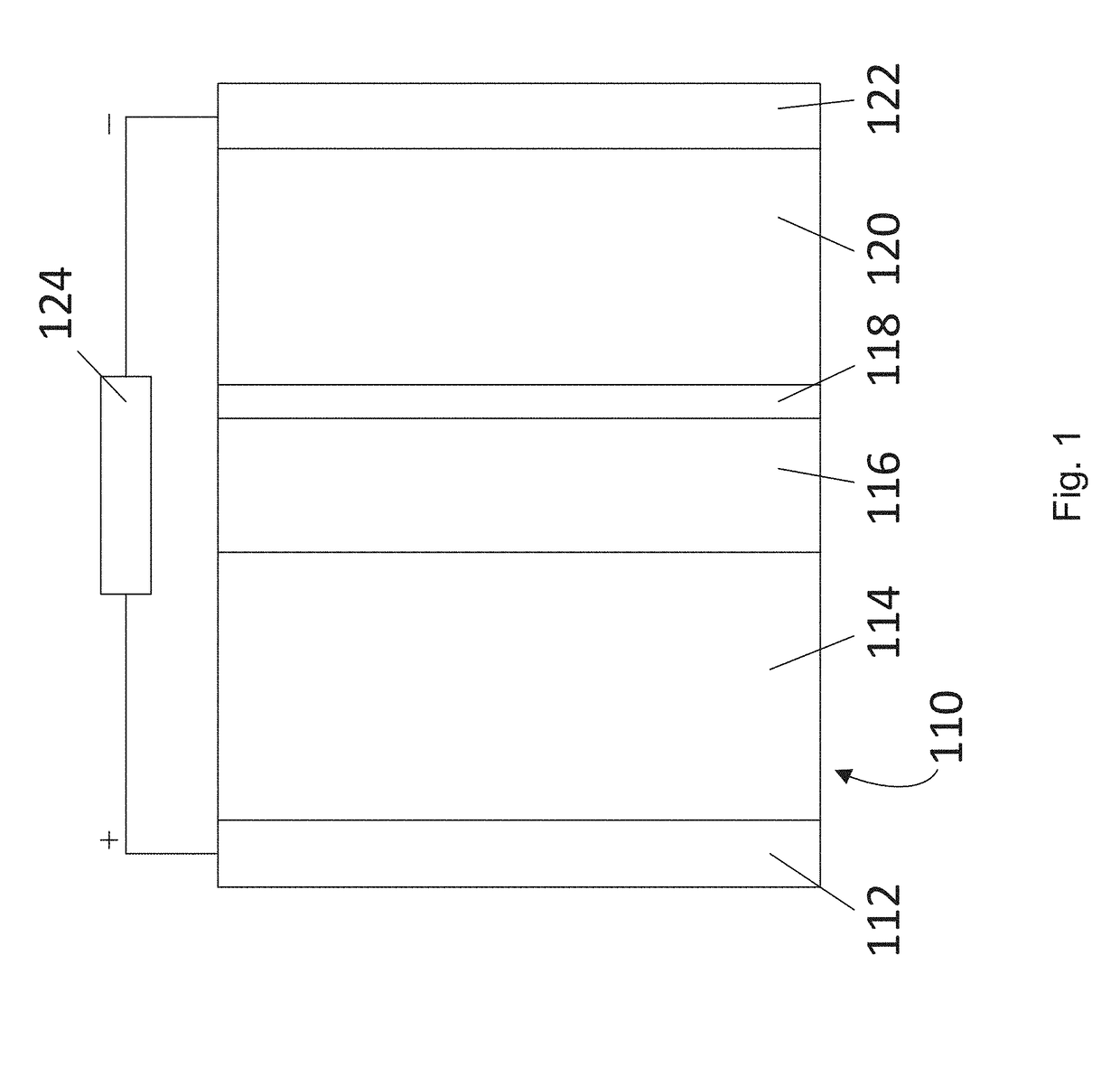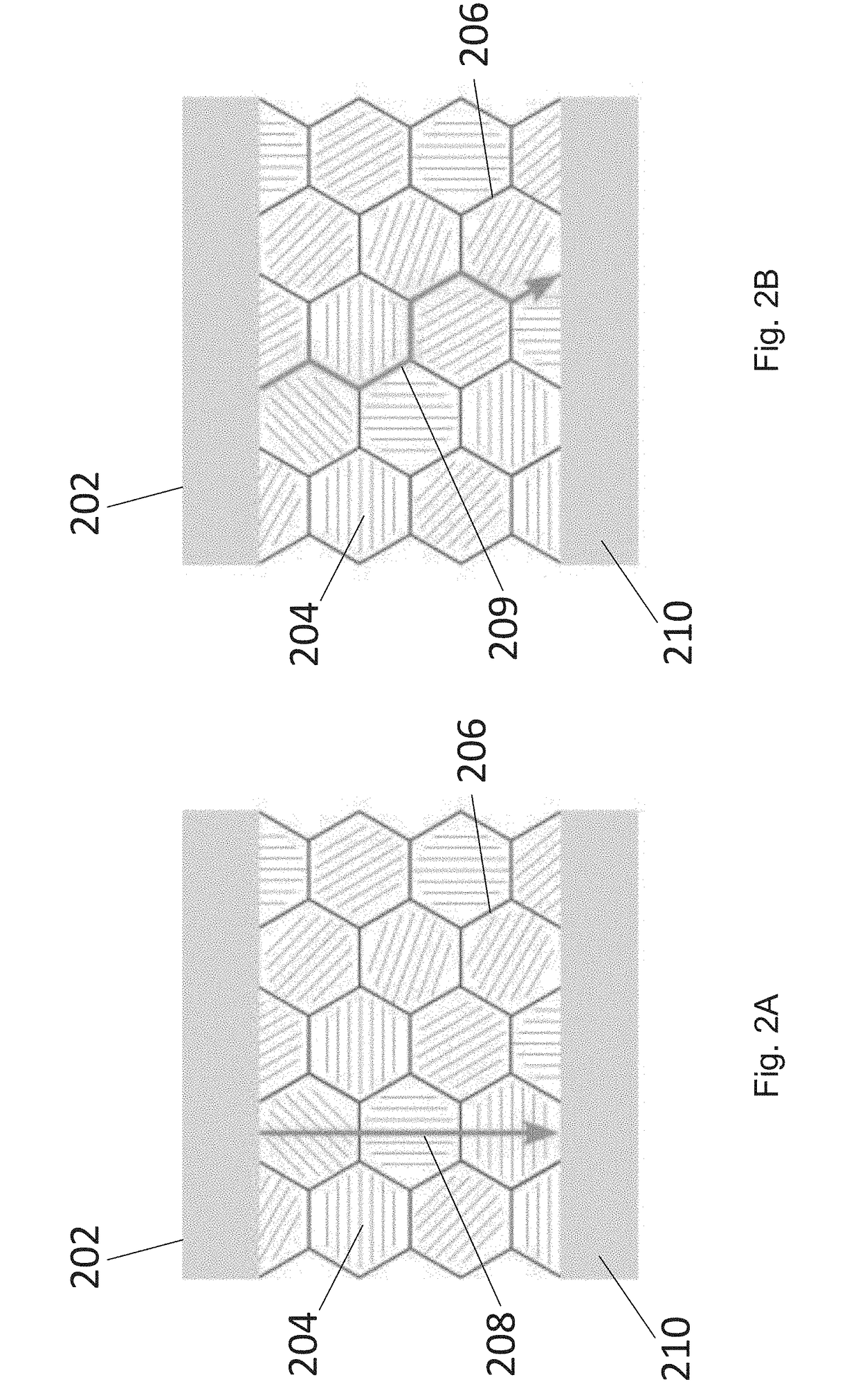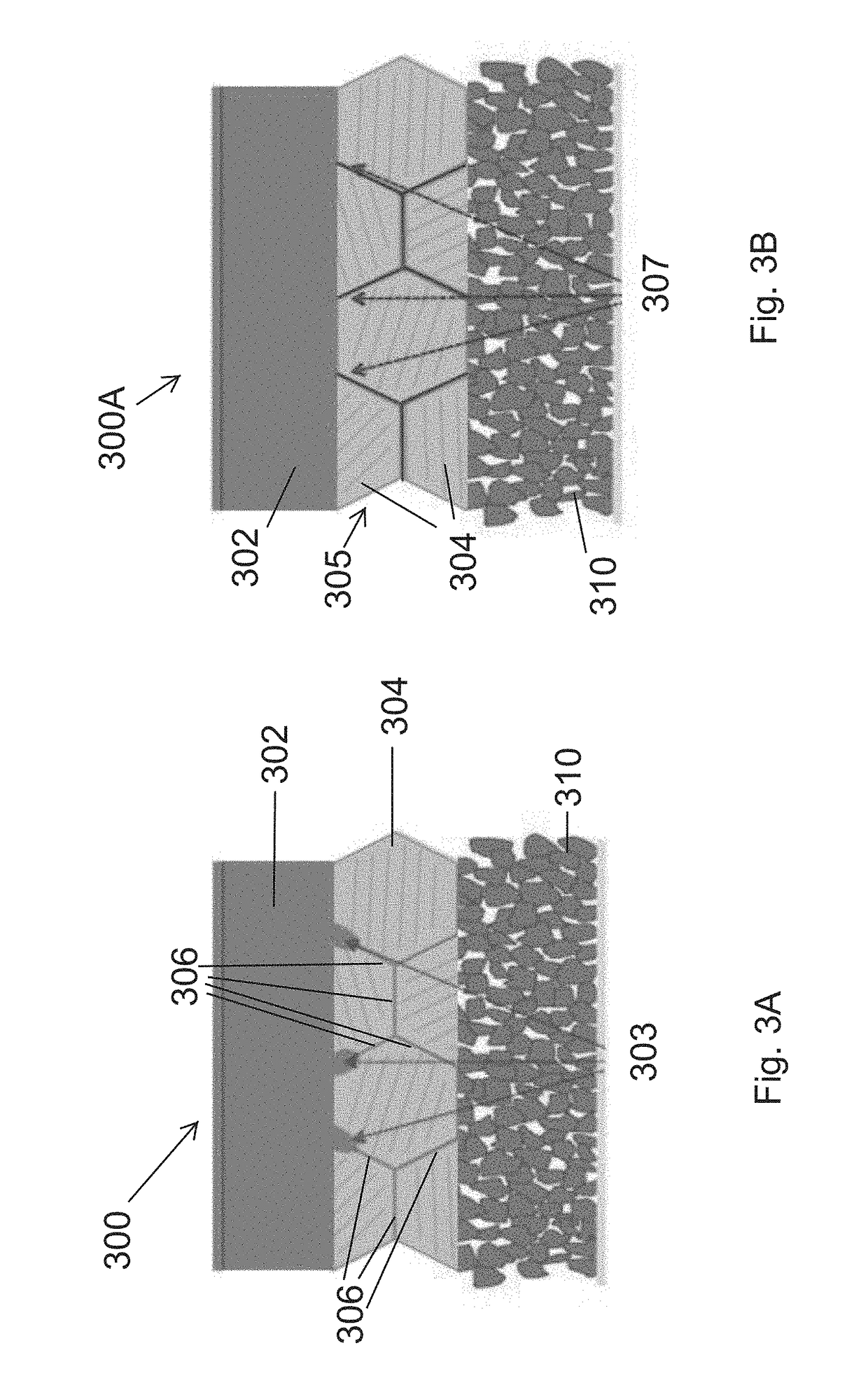Method for Suppressing Metal Propagation in Solid Electrolytes
a solid electrolyte and metal propagation technology, applied in the field of electrochemical devices, can solve the problems of low cost, incompatible liquid electrolyte used in li-ion batteries with advanced battery concepts, and inability to manufacture and test solid-state batteries for bulk-scale applications such as electric vehicles, and achieve the effect of low cos
- Summary
- Abstract
- Description
- Claims
- Application Information
AI Technical Summary
Benefits of technology
Problems solved by technology
Method used
Image
Examples
example 1
[0137]To demonstrate that LLZAO (0.25 moles Al added to LLZO to stabilize the cubic phase) grain boundaries can be modified using one of the oxides mentioned above, MgO was incorporated into an LLZAO microstructure. A sol-gel approach was used to coat LLZAO particles, followed by hot pressing at 1100° C. for 1 hour. The densified pellet was characterized using X-Ray diffraction-XRD (see FIG. 5), scanning electron microscopy (SEM) (see FIG. 6), and electrochemical impedance spectroscopy (EIS) (see FIG. 7).
[0138]The XRD data show that the LLZAO contained MgAl2O4 after hot pressing. It is likely that the MgO reacted with some of the Al from the LLZO, to form some MgAl2O4, which remained a secondary phase within the LLZAO microstructure. The SEM (FIG. 6) analysis, confirms that regions rich in Mg, Al, and O, were likely MgAl2O4, which agrees with the XRD data. MgAl2O4 also contained significant quantities of C. The EIS data confirms that despite the presence of MgAl2O4 in the microstruc...
example 2
[0139]To demonstrate the single crystal LLZO cell approach, a process for controlling the grain size from between 1 μm and >1500 μm was developed. The process involved densifying LLZO between 1100° C. and 1400° C. to grow the grains. Electron backscatter selected area diffraction (EBSD) was used to identify grains (by their crystallographic orientation) to determine the grain size and grain size distribution (see FIG. 8A). Along with larger grains, the LLZO also becomes optically transparent, thus indicating negligible porosity. This processing approach can be used to enable the cell configuration in FIG. 4A. Looking at FIGS. 8A and 8B, fabrication of large LLZO grains is shown. In FIG. 8A, a grain size histogram confirmed relatively large LLZO grains can be made. In FIG. 8B, an EBSD image of large grain LLZO is shown wherein each color represents a unique crystallographic orientation, e.g., grain.
example 3
[0140]To demonstrate that dense films can be formed, an example electrochemical cell structure was prepared. As shown in FIG. 9A, the cell structure 500 comprised a nickel foil current collector 510, a lithium metal anode 512, a 10 μm thick solid electrolyte 514 having grains comprising LLZO with MgO modified grain boundaries that prevent lithium metal propagation, a cathode active material 518 comprising LiMO2 particles (where M is a metal—e.g., LiCoO2) in a liquid electrolyte 516, and an aluminum current collector 520. From FIG. 9B, it can be seen that dense films can be formed. The film of FIG. 9B had a total ionic conductivity of 0.1-0.2 mS / cm.
[0141]In the electrochemical cell of FIG. 9A, an example liquid electrolyte 516 comprises a lithium compound in an organic solvent. The lithium compound may be selected from LiPF6, LiBF4, LiClO4, lithium bis(fluorosulfonyl)imide (LiFSI), LiN(CF3SO2)2 (LiTFSI), and LiCF3SO3 (LiTf). The organic solvent may be selected from carbonate based so...
PUM
 Login to View More
Login to View More Abstract
Description
Claims
Application Information
 Login to View More
Login to View More - R&D
- Intellectual Property
- Life Sciences
- Materials
- Tech Scout
- Unparalleled Data Quality
- Higher Quality Content
- 60% Fewer Hallucinations
Browse by: Latest US Patents, China's latest patents, Technical Efficacy Thesaurus, Application Domain, Technology Topic, Popular Technical Reports.
© 2025 PatSnap. All rights reserved.Legal|Privacy policy|Modern Slavery Act Transparency Statement|Sitemap|About US| Contact US: help@patsnap.com



